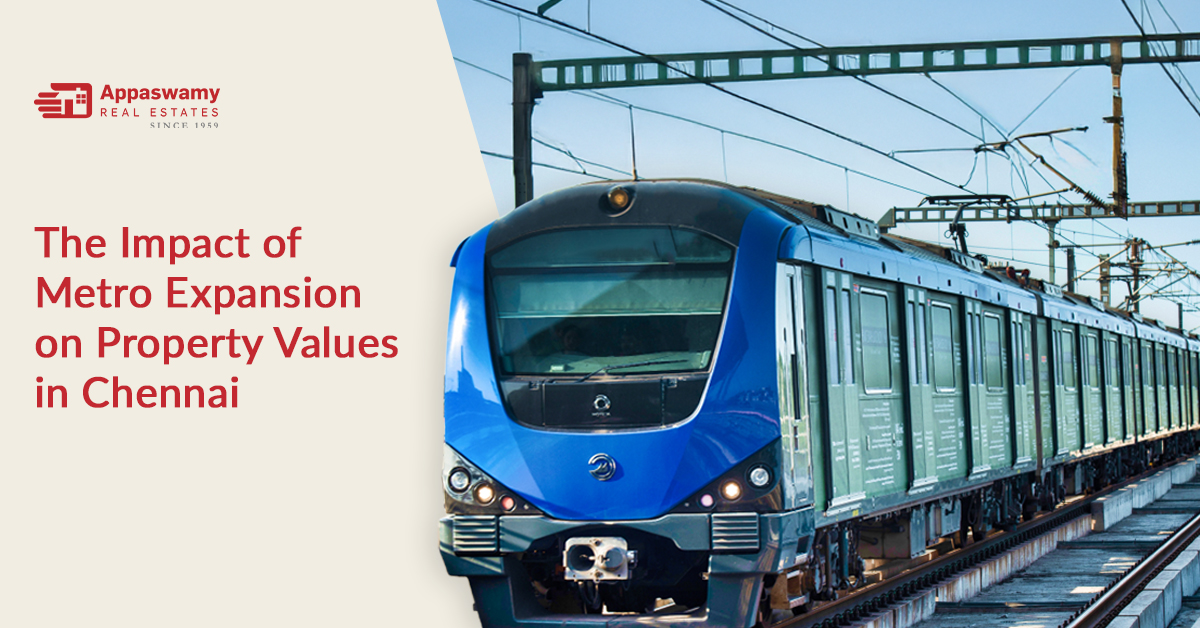
In today’s fast-moving urban life, connectivity is everything. In Chennai, the expansion of the Metro Rail network is more than just a transport upgrade, it’s a real estate revolution in motion. With Phase II of the Chennai Metro underway, smart homebuyers and investors are turning their eyes to overlooked neighborhoods that will soon enjoy seamless metro access. Why? Because wherever the metro goes, value follows.
Metro Connectivity Increases Property Demand
The Chennai Metro has already proven that proximity to a station transforms how people choose where to live. According to the Chennai Comprehensive Mobility Plan (CMDA, 2019), areas within walking distance of metro stations are marked for high-density growth, commercial investment, and residential demand.
Homebuyers prefer metro-connected homes for one clear reason: quality of life. A reliable, fast commute means less time in traffic and more time at home. That lifestyle shift is fueling demand like never before.
Real Examples of Price Growth
Phase I of the Chennai Metro, connecting key areas like Koyambedu, Vadapalani, and Ashok Nagar, led to property prices rising by 25–35% in those zones between 2015 and 2022, according to Knight Frank India.
More recently, localities like Porur and Poonamallee, now part of the Phase II blueprint have seen a sharp spike in enquiries and rising per sq. ft. rates. Real estate analysts have noted that land value can increase by up to 30% near upcoming metro stations during pre-operation phases.
Upcoming Metro Lines: Tomorrow’s Hotspots
Chennai Metro’s Phase II stretches across 118.9 km and introduces three new corridors:
These corridors cut across fast-developing neighborhoods, IT parks, educational zones, and healthcare hubs. Areas like Sholinganallur, Iyyappanthangal, Poonamallee, and Thoraipakkam are already gaining attention from both renters and investors alike.
Why Investors Prefer Metro-Linked Homes
Homes near metro stations are easier to rent, faster to resell, and tend to hold their value better during market fluctuations. Rental yields are higher due to demand from professionals and students who prioritise convenience.
Moreover, the CMDA offers incentives for builders, like higher Floor Space Index (FSI), in metro-influence zones resulting in well-designed, high-quality developments in these areas. This also means that infrastructure like roads, lighting, drainage, and water supply gets priority attention from city planners.
Appaswamy Projects That Are Aligned with Metro Growth
At Appaswamy Real Estates, location is more than a choice, it’s a strategy. Many of our premium residential developments are already positioned near current and future metro corridors:
When you invest in an Appaswamy home, you’re not just choosing elegance and quality, you’re choosing future value, effortless commuting, and a well-connected life.
Chennai’s metro is laying down more than just tracks, it’s laying the foundation for long-term real estate growth. And homes that are connected to this future, like those by Appaswamy, are poised to rise with it.
Now is the time to get ahead, before the stations open and the prices follow.
07 Jul 2025